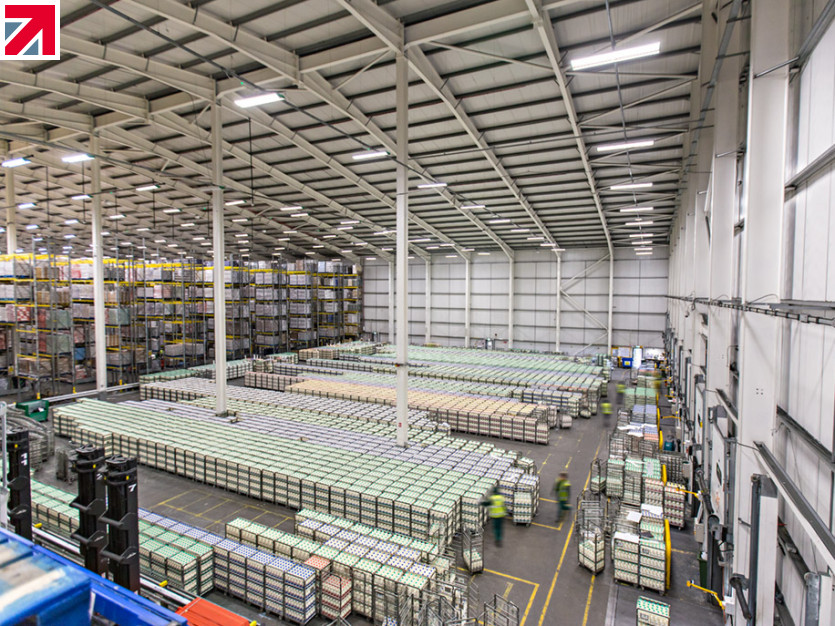There are three key criteria when lighting warehousing and distribution centres, first and foremost the area must be adequately lit with sufficient uniformity to ensure safety is maintained. The combination of lorries, forklifts and pedestrians combined with pallets stocked at high level creates a potentially dangerous environment which must be safely lit. Areas of high risk should be identified and lit accordingly, especially where pedestrians and vehicles cross paths or operate in the same space, and also at loading bays which can be a particular area of risk. Automatic dock lights can help minimise the risk of a forklift driver accidentally attempting to load a lorry which is no longer present, a common cause of the most serious accidents in warehousing.
Secondly, the lighting must be effective to allow for accurate stock identification, mispicks can be costly to rectify so lighting must allow staff to quickly and accurately identify stock and labelling with a minimum of errors. Lighting should cast uniformly down the face of the racking including at the highest levels allowing forklift operators to both identify labelling and to ensure the pallets can be lifted safely. Lighting schemes often focus on the lux level and uniformity on the horizontal working plane, however in warehousing applications there must be an equal focus on the vertical planes to allow for accurate stock identification.
Energy efficiency is the third key aspect of effective warehouse lighting, sensor controls are in use for presence detection and daylight regulation in the majority of warehousing applications and these should ensure that the work environment is not compromised. Ideally sensors should be grouped to ensure that any single trigger causes adjacent luminaires outside the detection zones to light simultaneously. This ensures that staff are not operating under a single operational luminaire and ensures the correct lux level in the working area is met. This is most easily achieved with a wireless system which allows sensors to be linked into groups without the need to install DALI wiring, and also brings other benefits such as being able to automate and monitor emergency testing giving further reductions in operating costs.
Find out more about Dextra Group plc on their member profile page here
Member-created content 3 years ago | From members
